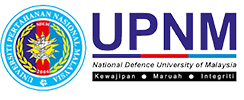NAVAL SCUBA-DIVING INJURIES AND ASSOCIATED UNDERWATER HAZARDS IN MALAYSIA
Keywords:
Scuba-diving injuries, Underwater hazards, Barotrauma, Navy personnelAbstract
Naval scuba-diving is part of military training and follows the standard military diving manuals and protocols. Advances in diving technology has allowing divers to safely descend to greater depths that were previously impossible. This may expose the divers to underwater hazards and barotrauma injuries causing a significant morbidity and even death. Barotrauma is physical damage to body tissues caused by a difference in pressure between a gas space inside, or in contact with, the body, and the surrounding gas or fluid. Barotrauma generally manifests as sinus or middle ear effects, decompression sickness (DCS), lung overpressure injuries and injuries from external squeezes. Other potential hazards namely oxygen toxicity, nitrogen narcosis, immersion pulmonary oedema and effects of hydrostatic pressure. Hence, this review discusses pathophysiology and presentation of barotrauma along with its associated hazards as well as medical management of the divers including roles of compression chamber for treatment and post-mortem purpose.
Downloads
Downloads
Published
How to Cite
Issue
Section
License

This work is licensed under a Creative Commons Attribution-NonCommercial-ShareAlike 4.0 International License.



